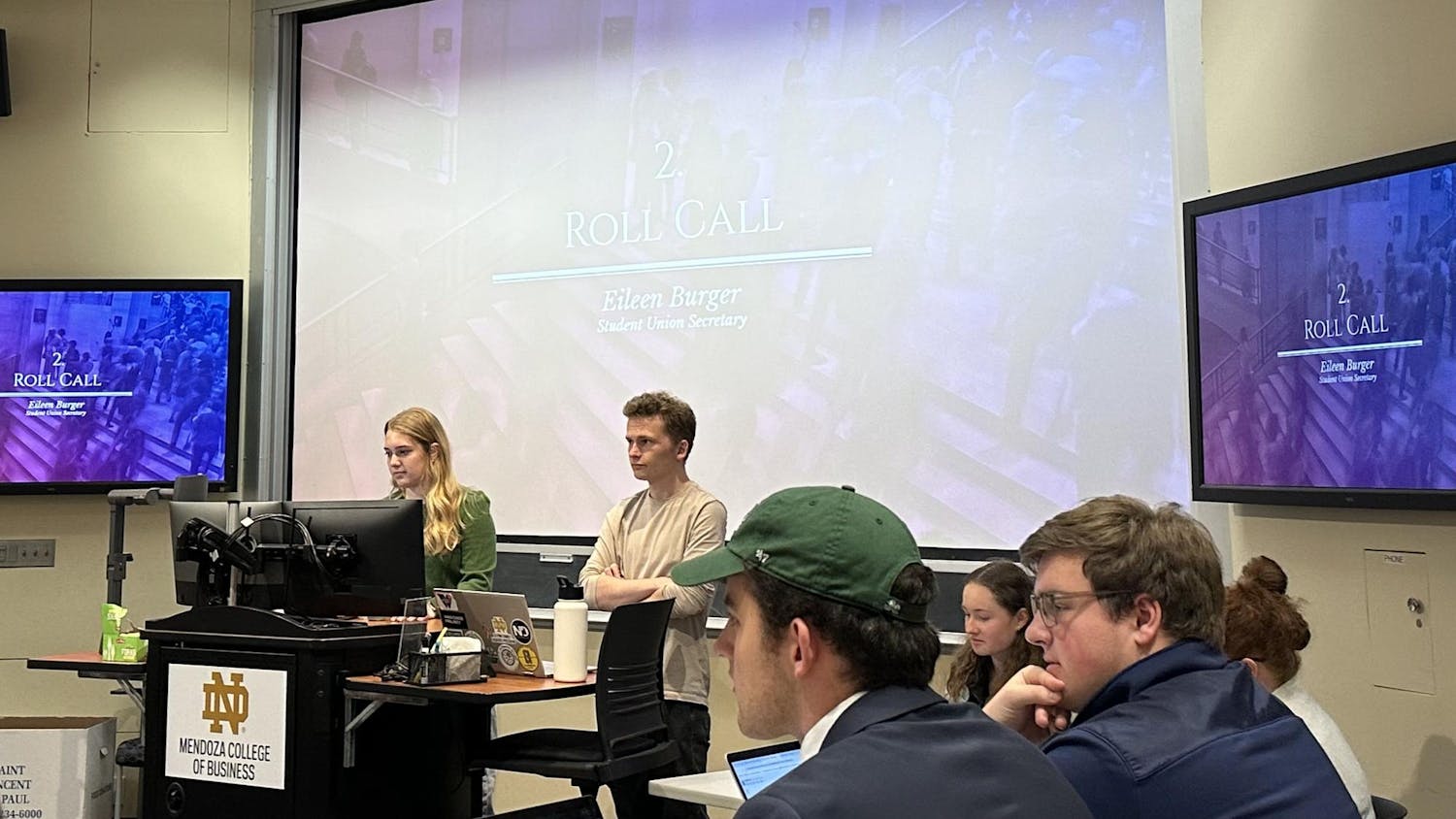After taking a class on French philosophy, sophomore Sheridan Rosner pursued her interest in the work of Albert Camus, an Algerian-French existentialist fiction writer, through a Nanovic Institute grant that sent her to see materials on Camus in Aix-en-Provence, France.
Rosner said she received a winter break research grant from the Nanovic Institute for European Studies to travel to Aix-en-Provence in early January and study manuscripts and displays in an exhibition there.
“Most of [Camus’] stuff is published, but I wanted to look at the originals,” Rosner said. “There was a lot of stuff that was published but you would never be able to find here — like random articles, random journals, Algerian journals that you would never find here that were on display.”
The Nanovic Institute provided $36,530 to 16 students to conduct one-week research projects over the break in areas ranging from literature to philosophy to architecture, according to associate director Dr. Anthony Monta.
Courtney Rae Haddick, a senior studying architecture, said she received around $2,500 to travel to Switzerland to study the architecture of towns in the Alps. A native of Salt Lake City in the Rocky Mountains, Haddick said she wanted to understand how Swiss towns were able to develop while respecting the mountain landscape around them.
“The places that going into it I expected to study a lot were the big cities like Interlaken and Lugano, but they’ve been overdeveloped almost as much as these places in the U.S.,” Haddick said. “Not that I wasn’t expecting it, but I didn’t realize I would actually learn more from the tiny towns that I went past on a train from Lugano to Interlaken.
“As far as where would be ideal to site a residential development or something like that, the examples might not be to look at these cities that every tourist that wants to go to Switzerland knows about, but actually it might be these small towns.”
Monta said the Nanovic Institute offers grants every break, and students who receive those grants generally work with faculty members to craft their proposals and research methodologies.
“We find, break after break after break, that the students who work closely with a professor on their research project have more focused, more fully developed, more concrete proposals, and those typically are funded,” Monta said.
Dr. Julia Douthwaite, a professor of French who has worked with many students on European and French research, said meeting with faculty in the weeks before the application deadline is crucial to developing a plan that is specific and detailed enough for the students to execute well.
“It takes a little bit of time to come from a big idea, like, ‘I’m interested in Hugo,’” Douthwaite said. “You need to work on the influence of Hugo’s frustration with the Catholic church in 1829 as seen in ‘Les Miserables’ and then look at pamphlets published in 1829 in a church in France and see how that might be echoed in the character of Quasimodo or something like that.
“The way I help them is basically paring away by saying, tighter, tighter, make it more focused so it’s something you can accomplish in one week.”













